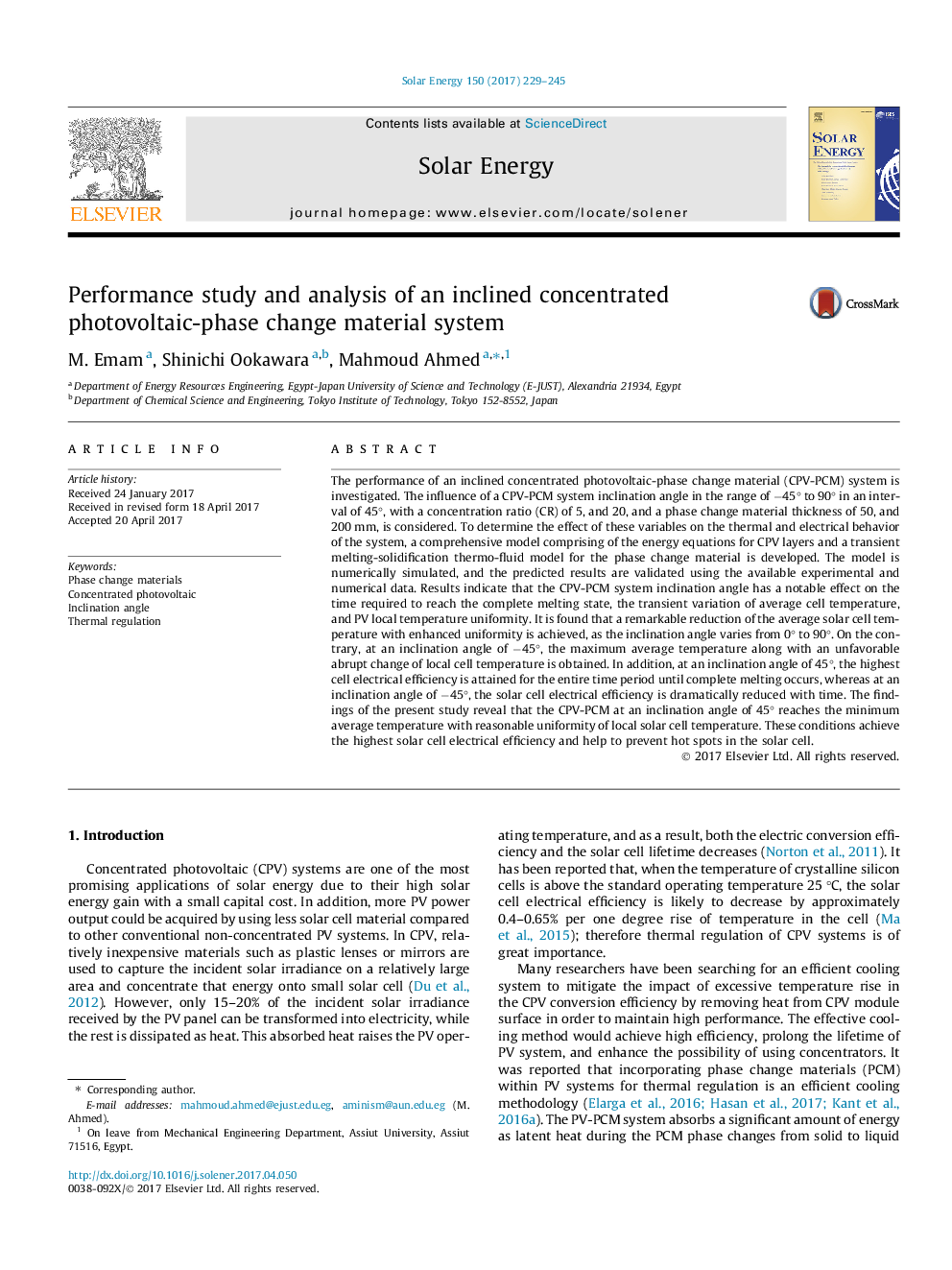| کد مقاله | کد نشریه | سال انتشار | مقاله انگلیسی | نسخه تمام متن |
|---|---|---|---|---|
| 5450793 | 1513068 | 2017 | 17 صفحه PDF | دانلود رایگان |
عنوان انگلیسی مقاله ISI
Performance study and analysis of an inclined concentrated photovoltaic-phase change material system
ترجمه فارسی عنوان
مطالعه عملکرد و تجزیه و تحلیل یک سیستم مواد تغذیه فاز فتوولتائیک متمرکز
دانلود مقاله + سفارش ترجمه
دانلود مقاله ISI انگلیسی
رایگان برای ایرانیان
کلمات کلیدی
مواد تغییر فاز، فتوولتائیک متمرکز زاویه گشتاور، تنظیم حرارتی،
موضوعات مرتبط
مهندسی و علوم پایه
مهندسی انرژی
انرژی های تجدید پذیر، توسعه پایدار و محیط زیست
چکیده انگلیسی
The performance of an inclined concentrated photovoltaic-phase change material (CPV-PCM) system is investigated. The influence of a CPV-PCM system inclination angle in the range of â45° to 90° in an interval of 45°, with a concentration ratio (CR) of 5, and 20, and a phase change material thickness of 50, and 200 mm, is considered. To determine the effect of these variables on the thermal and electrical behavior of the system, a comprehensive model comprising of the energy equations for CPV layers and a transient melting-solidification thermo-fluid model for the phase change material is developed. The model is numerically simulated, and the predicted results are validated using the available experimental and numerical data. Results indicate that the CPV-PCM system inclination angle has a notable effect on the time required to reach the complete melting state, the transient variation of average cell temperature, and PV local temperature uniformity. It is found that a remarkable reduction of the average solar cell temperature with enhanced uniformity is achieved, as the inclination angle varies from 0° to 90°. On the contrary, at an inclination angle of â45°, the maximum average temperature along with an unfavorable abrupt change of local cell temperature is obtained. In addition, at an inclination angle of 45°, the highest cell electrical efficiency is attained for the entire time period until complete melting occurs, whereas at an inclination angle of â45°, the solar cell electrical efficiency is dramatically reduced with time. The findings of the present study reveal that the CPV-PCM at an inclination angle of 45° reaches the minimum average temperature with reasonable uniformity of local solar cell temperature. These conditions achieve the highest solar cell electrical efficiency and help to prevent hot spots in the solar cell.
ناشر
Database: Elsevier - ScienceDirect (ساینس دایرکت)
Journal: Solar Energy - Volume 150, 1 July 2017, Pages 229-245
Journal: Solar Energy - Volume 150, 1 July 2017, Pages 229-245
نویسندگان
M. Emam, Shinichi Ookawara, Mahmoud Ahmed,
